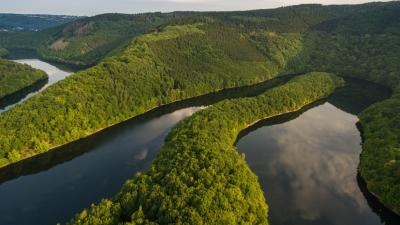Representing River Networks in an Unstructured Mesh Framework
To model rivers, researchers use conceptual river networks to represent real-world river networks. This is difficult, as real-world river networks are very complex. In addition, any practically useful conceptual river networks need be compatible with the different types of meshes employed by hydrologic and Earth system models. Currently, few methods consider river network representation in an unstructured mesh; this is an emerging area of interest for Earth system models. A newly created hexagonal mesh watershed delineation model will allow researchers to run fully coupled land-river-ocean simulations using a unified mesh framework, which will be used to understand the coastal dynamics under a changing climate.
To better understand the water cycle in complex landscapes, researchers need to represent different hydrologic features (e.g., river, lake, and ocean) in a way that allows them to freely interact. Developing the capability of representing real-world river networks in an unstructured mesh brings models one step closer to allowing rivers and other hydrologic features to consistently interact. This research also helps improve coastal zone Earth system modeling, which is critical for understanding the effects of a changing climate.
Better modeling the complex interactions between different hydrologic features in the Earth system requires flexibly representing these features in a flexible way. This often requires better representation of their locations and geometries.
The HexWatershed model is the world’s first and only watershed delineation model based on the hexagonal mesh, designed to move away from the traditional rectangle grid toward a fully unstructured mesh framework. An unstructured mesh framework provides more realistic approach for capturing hydrologic features. Based on the HexWatershed model, researchers developed new capabilities to conduct “stream burning,” a technique often used in watershed hydrology, on real-world river networks. This converts them into meshes that can be consistently represented in any mesh system at any spatial resolution. This study paves the way for fully coupled land-river-ocean Earth system model simulations under a unified mesh framework.

